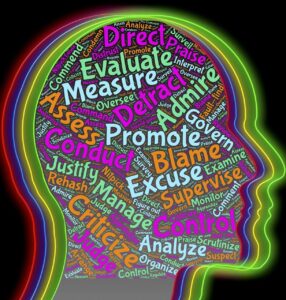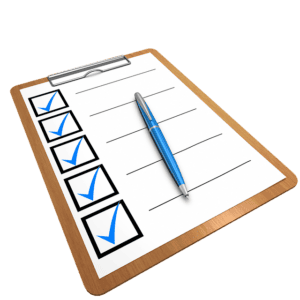One of the most valuable tools Colleges and other licensing authorities have for protecting the public is ensuring the competency of their members. Colleges are granted enforcement options to accomplish this, but these are by far the least favoured option. By operating continuing competency programs, licensing authorities don’t just support the development of skills of their membership, but also monitor members’ practices. Ensuring members are practicing to the highest standards allows regulatory bodies to take a proactive approach to reducing complaints. With the right software, this process can even be automated so there’s no extra burden on staff or resources.
Continuing Competency Models.
Regulatory authorities use different models to ensure that registrants are keeping skills up-to-date and remaining competent. Each one has unique features, benefits and shortcomings. Two commonly used models are reflective self-assessment and continuing education units. Your licensing body may use one or both of the models available (or variations on either) depending on its individual bylaws and continuing competency objectives. Your license management software should be flexible enough to meet your organization’s continuing competency needs, regardless of the model or combination of models that you use.
The Reflective Model.
 The reflective model of continuing competence relies on member self-assessment. Members create their own learning objectives for the next year of their practice. Then, at the time of renewal, members reflect on the learning they’ve accomplished throughout the year. They also consider the impact it has had on their practice, and whether or not they met their learning objectives. While this model allows for significant flexibility for members, it is also reliant on the auditing process to ensure honesty. Members are essentially on the honour system when it comes to completing and reporting their learning.
The reflective model of continuing competence relies on member self-assessment. Members create their own learning objectives for the next year of their practice. Then, at the time of renewal, members reflect on the learning they’ve accomplished throughout the year. They also consider the impact it has had on their practice, and whether or not they met their learning objectives. While this model allows for significant flexibility for members, it is also reliant on the auditing process to ensure honesty. Members are essentially on the honour system when it comes to completing and reporting their learning.
Continuing Education Units (CEUs).
The other common method of measuring continuing competency is using continuing education units (sometimes called credits). Under this model, the licensing body sets a total number of units that members must earn within a given time frame. Various areas of the profession are spelled out in different categories. Then members earn a specific number of units from each to ensure a well-rounded education. These categories are often broad, but occasionally may be very specific. They might even include a list of accepted learning activities such as courses, seminars or webinars relevant to the field or topic. CEUs are far less subjective than the reflective model but also require more work and planning up front to implement.
Making your Model Motivating.
One of the key benefits of a continuing competency program is that it helps prevent complaint cases from ever arising. However, it’s important that members actually follow through with their learning objectives. Thankfully, that doesn’t have to be a chore. In the past, documentation was sent back and forth through the mail, which created significant work for staff . It was also terribly inconvenient for members. Nowadays, online options offer a much more streamlined and convenient process. The right license management software reinforces learning objectives and providse regular follow-ups using cloud-based technology. By giving members every opportunity to be successful, licensing bodies can simultaneously protect the public while enhancing the reputation of the industry and preventing costly complaint hearings.
Reinforcing Learning Objectives Through Encouragement.
Although it is the responsibility of your members to make sure they reach their continued learning goals every year, it is the responsibility of the licensing authority to protect the public interest. This is best accomplished by taking an active interest in your members’ continuing education, and supporting them throughout the process. Providing a little bit of encouragement can go a long way to keeping members’ learning on track, and thereby potentially helping to prevent incidents and complaints. It also earns goodwill and demonstrates your organization’s commitment to high standards.
What’s more, providing encouragement to your membership doesn’t have to be a labour intensive undertaking. A modern license management software that understands licensing authorities needs can automate much (if not all) of this process. A simple text or email acknowledgement can be automatically generated and delivered as members update their profiles and achieve objectives throughout the year.
Followup.
 A common weakness in continuing competency processes is a lack of followup throughout the year. During renewals, learning objectives are identified and approved. Then they’re forgotten about (or worse, ignored) until the next time renewals are due. The result can sometimes be a last minute push by already busy members to meet their competency targets in the last few weeks of the year.
A common weakness in continuing competency processes is a lack of followup throughout the year. During renewals, learning objectives are identified and approved. Then they’re forgotten about (or worse, ignored) until the next time renewals are due. The result can sometimes be a last minute push by already busy members to meet their competency targets in the last few weeks of the year.
However, a modern license management software can mitigate this problem. Alinity, for example, allows self-managed learning profiles that can automatically followup with members. Registrants access their online learning profile to review their progress and make updates, and gentle text or email reminders prompt them to update their learning profiles after an extended period. The exact time frame and message are customizable. You can even provide personalized follow up for new registrants or other groups.
When it comes to complaints, prevention is by far easier for licensing bodies to handle than costly and damaging complaints. By creating the right environment and providing valuable tools that will motivate and encourage their membership, licensing authorities can help prevent complaints against members before they ever become an issue.
